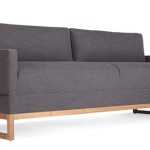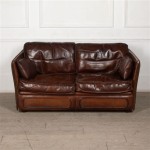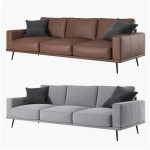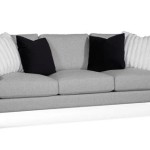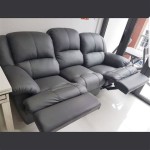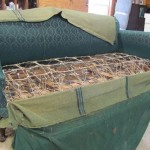How to Pull Out a Hospital Sofa Bed from Home Depot
Hospital sofa beds, often purchased from retailers like Home Depot, offer a practical solution for accommodating overnight guests or providing a comfortable resting space in home healthcare settings. The mechanism that allows these sofa beds to transform from a seating arrangement to a sleeping surface can vary, but understanding the general principles will enable users to operate them effectively, regardless of the specific model purchased. This article details the process of converting a standard pull-out hospital sofa bed from Home Depot, covering common mechanisms and potential troubleshooting steps.
Before initiating the process, ensuring the surrounding area is clear of obstructions is paramount. This includes removing any throw pillows, blankets, or other items that may impede the movement of the bed frame. Ample space is also needed to fully extend the bed without bumping into walls or other furniture. Providing this clearance is critical for safety and will prevent damage to the sofa bed or the surrounding environment.
Knowing the specific model of the hospital sofa bed is beneficial. Home Depot offers a range of brands and designs, each potentially featuring slight variations in their pull-out mechanisms. Checking the product information, warranty details, or even the Home Depot website using the model number can provide valuable insights into the specific steps required for operation. This preliminary research can significantly streamline the conversion process and minimize the risk of encountering unexpected challenges.
Identifying the Release Mechanism
The first step in pulling out a hospital sofa bed involves locating and activating the release mechanism. This mechanism is designed to unlock the bed frame from its concealed position within the sofa. The location and type of this release can vary depending on the sofa bed's design, but some common configurations exist.
One of the most frequently encountered mechanisms is a pull strap or handle located at the front edge of the sofa, typically underneath the seat cushions. This strap, when pulled firmly, disengages the locking mechanism and allows the bed frame to slide forward. Ensure the strap is pulled straight out, avoiding any twisting or sideways motion, as this could damage the mechanism. If resistance is encountered, inspect the area around the strap for any obstructions and try again.
Another common design involves a latch or lever located on the side of the sofa, often near the armrests. This lever, when depressed or lifted, unlocks the bed frame. Sometimes, these levers are less visible, integrated seamlessly into the design of the armrest. Consult the product manual or carefully examine the sofa's exterior to locate any hidden levers. Similar to the pull strap, apply firm, even pressure to the lever, avoiding any jerky movements.
In some instances, the release mechanism may be integrated into the armrest itself. This could involve pressing a button, sliding a panel, or rotating a component to disengage the lock. Integrated mechanisms are often designed for a more streamlined appearance, but they can also be less intuitive. If this is the case, referring to the manufacturer's instructions is crucial to ensure proper operation.
If no obvious release mechanism is visible, carefully inspect the underside of the sofa, particularly along the front edge. Some sofa beds have a concealed release that is only accessible from below. Using a flashlight can aid in locating this hidden mechanism. Proceed cautiously, as some components may have sharp edges or pinch points.
Extending the Bed Frame
Once the release mechanism has been activated, the bed frame should be able to be pulled out from within the sofa. This extension process typically involves a smooth, linear motion. Grip the front edge of the sofa bed frame firmly, preferably with both hands, and pull it forward with a steady, even force. Avoid yanking or jerking the frame, as this could damage the internal mechanism or cause the frame to become misaligned.
As the bed frame is extended, various hinges and joints will unfold and lock into place. These hinges are designed to provide structural support to the extended bed. Ensure that each hinge and joint is fully extended and locked before placing any weight on the bed. This is crucial for stability and safety. If any hinge appears to be stuck or misaligned, gently manipulate it until it clicks into its proper position. Do not force the hinge, as this could lead to breakage.
Many hospital sofa beds employ a folding mattress that is stored within the sofa frame when not in use. As the bed frame is extended, the mattress will automatically unfold and settle into place. However, some models may require manual unfolding. In this case, carefully unfold the mattress along its designated seams, ensuring that it is evenly distributed across the bed frame.
Pay attention to the legs or support structures that provide stability to the extended bed. These legs may automatically deploy as the bed frame is pulled out, or they may require manual unfolding and locking. Ensure that all legs are securely locked into place before placing any weight on the bed. If the legs are not properly secured, the bed could collapse, posing a safety hazard.
During the extension process, listen for any unusual noises, such as grinding, squeaking, or popping. These noises could indicate a problem with the mechanism. If any concerning noises are heard, stop the extension process and inspect the bed frame for any apparent damage or misalignment. Addressing the issue promptly can prevent further damage and ensure the safe operation of the sofa bed.
Troubleshooting Common Issues
Despite following the proper procedures, users may encounter certain issues when attempting to pull out a hospital sofa bed. These issues can range from difficulties in releasing the mechanism to problems with extending the bed frame. Understanding these common problems and their potential solutions is essential for ensuring the smooth operation of the sofa bed.
One common issue is difficulty in releasing the locking mechanism. This could be due to a number of factors, including a jammed latch, a corroded mechanism, or a build-up of debris. If the release mechanism is stuck, try applying a small amount of lubricant, such as WD-40, to the moving parts. Allow the lubricant to penetrate for a few minutes before attempting to release the mechanism again. Avoid using excessive force, as this could damage the mechanism further.
Another potential problem is difficulty in extending the bed frame. This could be caused by misaligned hinges, obstructed rollers, or a build-up of dust and grime. If the bed frame is difficult to extend, inspect the hinges and rollers for any obstructions or damage. Clean the rollers with a damp cloth to remove any dirt or debris. If the hinges are misaligned, gently manipulate them until they are properly aligned. Applying a small amount of lubricant to the rollers and hinges can also facilitate smoother movement.
Sometimes, the legs or support structures may not deploy properly. This could be due to a jammed locking mechanism, a bent leg, or a build-up of debris. If the legs are not deploying correctly, inspect the locking mechanism for any obstructions or damage. Clean the mechanism with a damp cloth to remove any dirt or debris. If a leg is bent, attempt to straighten it gently. If the leg is severely bent, it may need to be replaced.
In some cases, the mattress may not unfold properly. This could be due to a jammed hinge, a torn seam, or a build-up of dust and grime. If the mattress is not unfolding correctly, inspect the hinges for any obstructions or damage. Clean the hinges with a damp cloth to remove any dirt or debris. If a seam is torn, it may need to be repaired. Ensure that the mattress is evenly distributed across the bed frame to prevent uneven wear and tear.
If all troubleshooting steps fail, contacting the manufacturer or a qualified furniture repair technician is advisable. Attempting to force a malfunctioning mechanism could result in further damage and may void the warranty. Providing the model number and a detailed description of the problem will help the manufacturer or technician diagnose the issue and provide appropriate solutions.
Regular maintenance, such as cleaning the mechanism, lubricating moving parts, and inspecting for damage, can help to prevent many of these issues from occurring. Following the manufacturer's instructions for proper operation and maintenance will ensure the long-term functionality and safety of the hospital sofa bed.

3 In 1 Convertible Chair Bed 37 W Beige Pull Out Twin Size Sofa With Pocket And Throw Pillow

How To Let Out A Couch Bed That Is Stuck Tiktok
Has Clever New Sleeper Sofas And They Re Perfect For Last Minute Hosting This Holiday Season

9 Tips For Moving Heavy Furniture The Storage Space
The 26 Best Sleeper Sofas Sofa Beds Futons On Internet From 86 To 5 929

The Home Depot S Early Black Friday Up To 50 Sitewide
How Some Sits On The Couch Can Tell You What Kind Of A Person They Are Which Type Dating

Diy Daybed For 100 Expandable Twin To King Guest Bed Dani Koch
This Is How An 8 000 Rescued Blue Couch Reached Tiktok Infamy

I Turned A Home Depot Shed Into Fully Functioning

